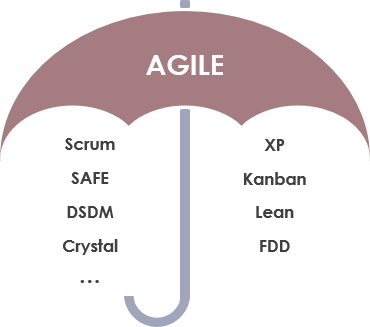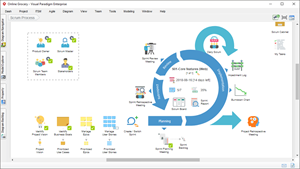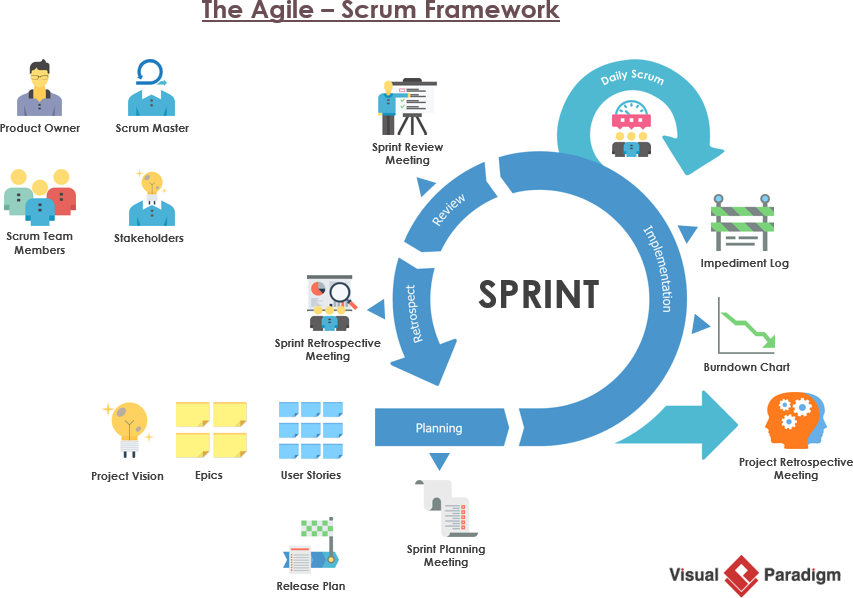In the fast changing digital work, the concept of Agile has become more and more popular. Everyone is talking about Scrum. There are also many different methods or approaches for agile development, including Extreme Programming (XP), Scrum, Crystal Methods, Adaptive Software Development (ASD), Feature Driven Development (FDD), Dynamic System Development (DSDM), and lightweight. RUP, Test Driven Development (TDD), and more as shown in the Figure below. Among the many agile development methods, the implementation of Scrum is the most popular one.
This article mainly shares the understanding and the implementation process of Scrum and the changes brought by the implementation of Scrum to your team.


Best Scrum Software Every Project Needs
A powerful scrum software that supports scrum project management. It features scrum tools like user story map, product backlog management, sprint backlog management, task management, daily scrum meeting, sprint planning tool, sprint review tool, sprint retrospective tool, burndown, impediment, stakeholder and team management.
Scrum is a framework for developing and maintaining complex products and is an incremental, iterative development process. In this framework, the entire development process consists of several short iteration cycles, a short iteration cycle called a Sprint, and each Sprint is 2 to 4 weeks long.
In Scrum, use the product Backlog to manage the product’s needs. The product backlog is sorted according to the priority of the business value of the product. In the Sprint, the Scrum team selected the highest priority requirements from the product Backlog to the sprint backlog in the sprint planning process. The selected product backlog items (PBIs) are discussed, analyzed, and estimated at the Sprint Planning Meeting to get a list of tasks (called Sprint backlog) to be included in the next sprint. When the Scrum team completed all the selection of tasks into the Sprint backlog list, the current Sprint ends and proceeds to the next Sprint iteration cycle.

Scrum has great value. However, it is difficult to implement Scrum in some companies. Some people say that Scrum has no substantive effect. So why a lot of people find Scrum is very difficult to master or even implement? Recalled what Scrum is written in the Scrum Guide:
Scrum is
As Scrum is demands change in culture which is difficult to achieve. If an organization adopt Scrum agile development from its traditional team, it requires a lot of skills, trainings, and coaching for all of the Scrum roles. Each of the Scrum roles has much broader responsibilities than what you would typically find in a traditional waterfall driven environment. Why Scrum is hard to master? Here the main reasons are:
The success strategies for transitioning from traditional to agile development approaches were derived from interviews with agile program managers and practitioners actively delivering software on a variety of projects across the world including: Interviews with agile professionals (i.e., business, IT, and management), Standards Organizations (PMI, Scrum Alliance, Agile Alliance, Scrum.org , DSDM, IEEE, etc.), Industry Case Studies, books, and research institutions (Gartner, Standish, Forrester, etc.).
(Source: Transitioning to agile: ten success strategies. by Carilli, J. F. PMI® Global Congress 2013)
Based on research and experience it is strongly recommended that organizations consider applying these strategies along with strong business and IT management disciplines in order to smoothly transit from traditional to agile development approach.
| About Visual Paradigm |
 Visual Paradigm help organizations stay competitive and responsive to change faster and better in today’s fast changing environment. Our award-winning products are trusted by over 320,000 users in companies ranging from small business, consultants, to blue chip organizations, universities and government units across the globe. It enables organizations to improve business and IT agility and foster innovation through popular open standards and process frameworks.Visual Paradigm, a killer Agile feature in 2018, introduced Scrum Process Canvas for automating the way a Scrum team to create, manage and deploy software application that empowers the team to continuously improve their performance at unprecedented speed and scale. Visual Paradigm help organizations stay competitive and responsive to change faster and better in today’s fast changing environment. Our award-winning products are trusted by over 320,000 users in companies ranging from small business, consultants, to blue chip organizations, universities and government units across the globe. It enables organizations to improve business and IT agility and foster innovation through popular open standards and process frameworks.Visual Paradigm, a killer Agile feature in 2018, introduced Scrum Process Canvas for automating the way a Scrum team to create, manage and deploy software application that empowers the team to continuously improve their performance at unprecedented speed and scale.
Manage the Entire Scrum Process in One Page
|